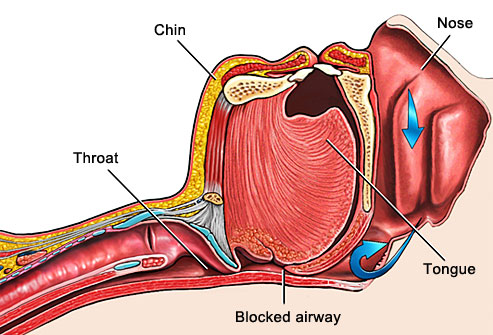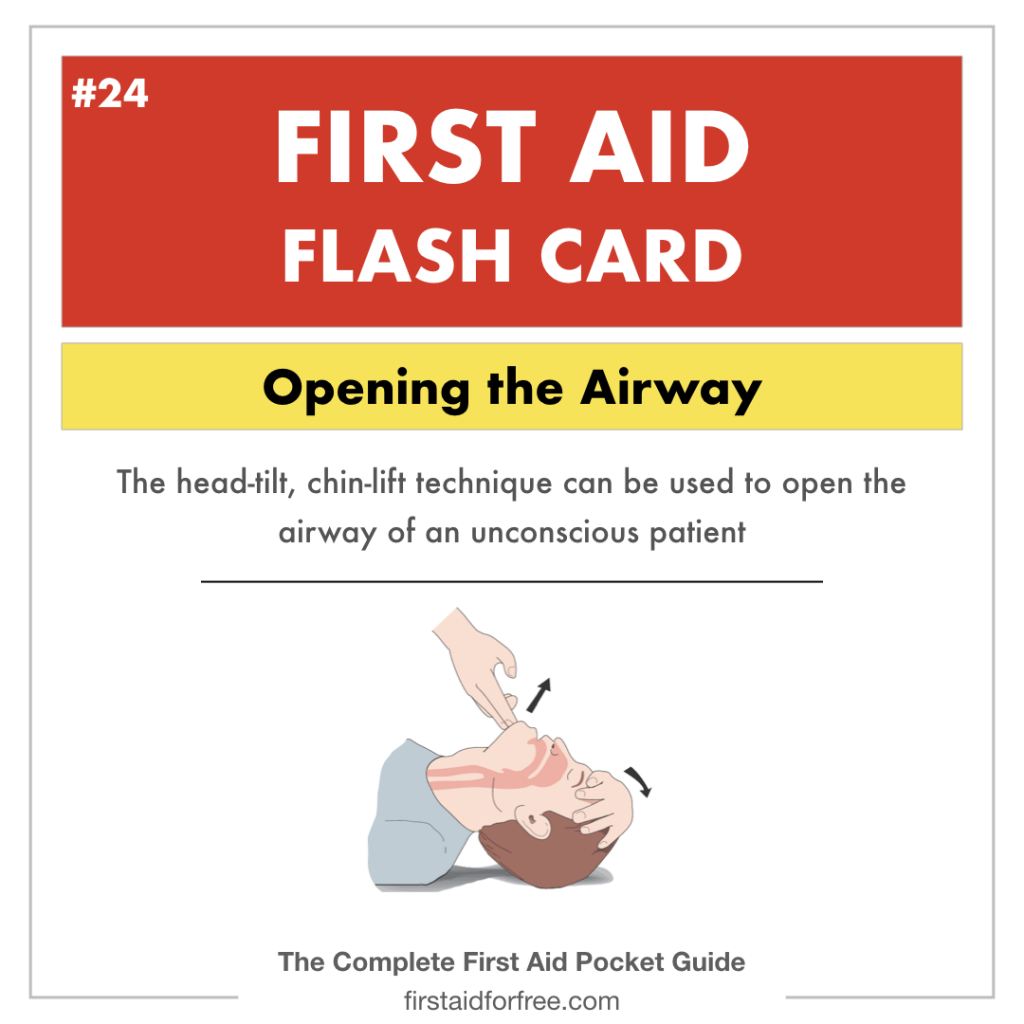Recognizing and Assessing Airway Obstruction in First Aid
The commonest cause of a blocked airway occurs with loss of consciousness when the muscles that support the tongue become relaxed and the tongue drops back into the throat. Since the tongue muscles are attached to the lower jaw this is easily corrected by maneuvers which involve positioning the patient’s jaw, for example, a head-tilt chin-lift.

Additional causes of obstruction include foreign body, blood and vomit, infection or allergic reaction with swelling, and injury to the neck and larynx.
Features of incomplete airway obstruction include noisy breathing. This may be a snoring noise, gurgling sounds, or strider a high-pitched sound, which usually occurs when the individual is breathing in.
Complete airway obstruction results in the absence of air movement, and respiratory noise but the patient often grasps his throat and looks panic-stricken before losing consciousness. See-saw movements of the chest and abdomen are sometimes seen.
A partial or complete airway obstruction will reduce the amount of oxygen available to the brain and increase the carbon dioxide thus worsening any brain damage that has already occurred as a result of the patient’s injury or illness, this is known as secondary brain injury.
The initial assessment may be made by speaking to the patient, as their response will indicate whether they are conscious and whether they can speak easily. If they can, then a significant airway obstruction is unlikely. however, if there is noisy breathing or no breathing at all, then action will be necessary.
Airway assessment can be divided into three main steps:
Look
- Look in the mouth for any evidence of obstruction
- Look at the chest wall for any pulling in of muscles between the ribs
- Look for see-saw movements of the chest and abdomen
- Look for any external trauma to the face or neck
Listen
- Snoring
- Gurgling
- Stridor: a high-pitched inspiratory sound
- Silence
Feel
Feel for movement of air using your cheek







Or jaw thrust for possible broken jaw